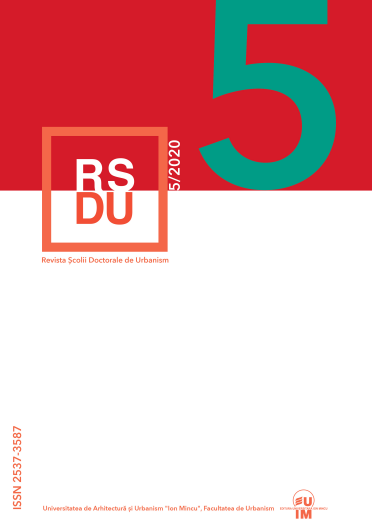Originile conectivităţii infrastructurii verzi în planificarea urbană
Origins of green infrastructure connectivity in urban planning
Author(s): Oana Catalina Popescu, Alexandru-Ionuţ PetrişorSubject(s): Physical Geopgraphy, Human Geography, Regional Geography, Environmental Geography, Applied Geography, Governance, Policy, planning, forecast and speculation
Published by: Universitatea de Arhitectură şi Urbanism »Ion Mincu«
Keywords: ecological infrastructure; interconection; networks; natural systems; landscapes; strategic planning; urban sprawl; human wellbeing;
Summary/Abstract: Urban ecology sees today the city nature as a green infrastructure providing ecosystem services to the urban dwellers, contributing to their welfare and a sustainable urban development. However, the concepts included in this view are not as new as it seems. Ecosystem services are just a reiteration of the ecological economy view of nature as a natural capital providing goods and services to the human society. Similarly, although increasing attention has been paid lately to the green infrastructure and its role in addressing challenges faced by the modern society, including the mitigation of climate change effects, it is less known that the concept, that started being used relatively recently, in the ‘90s, has emerged at the end of the 21st century in the works of the prominent landscape architects and urban planners Frederick Law Olmsted and Ebenezer Howard. They argued in their projects, revolutionary for that time, for the need to combat urban sprawl through a strategic planning of vegetated systems and corridors, known today as “green infrastructure”. The designed components of the systems of urban parks and green spaces are similar to those of the “green infrastructure”, consisting of nodes (core areas/hubs) and connections. The relationship between nature and human well-being (known today as “ecosystem services”) and sustainability was also anticipated by their woks. Most importantly, these early researches demonstrated that the green infrastructure is not optional, but must be strategically devised, holistically planned, and properly managed. This work aims to revisit the old works from a modern perspective.
Journal: Revista Şcolii Doctorale de Urbanism
- Issue Year: 5/2020
- Issue No: 1
- Page Range: 65-84
- Page Count: 20
- Language: Romanian

